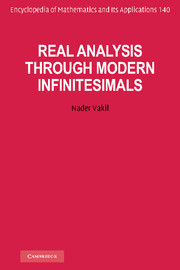Book contents
- Frontmatter
- Contents
- Preface
- Introduction
- PART I ELEMENTS OF REAL ANALYSIS
- PART II ELEMENTS OF ABSTRACT ANALYSIS
- 10 Point set topology
- 11 Metric spaces
- 12 Complete metric spaces
- 13 Some applications of completeness
- 14 Linear operators
- 15 Differential calculus on ℝn
- 16 Function space topologies
- Appendix A Vector spaces
- Appendix B The b-adic representation of numbers
- Appendix C Finite, denumerable, and uncountable sets
- Appendix D The syntax of mathematical languages
- References
- Index
10 - Point set topology
from PART II - ELEMENTS OF ABSTRACT ANALYSIS
Published online by Cambridge University Press: 05 January 2013
- Frontmatter
- Contents
- Preface
- Introduction
- PART I ELEMENTS OF REAL ANALYSIS
- PART II ELEMENTS OF ABSTRACT ANALYSIS
- 10 Point set topology
- 11 Metric spaces
- 12 Complete metric spaces
- 13 Some applications of completeness
- 14 Linear operators
- 15 Differential calculus on ℝn
- 16 Function space topologies
- Appendix A Vector spaces
- Appendix B The b-adic representation of numbers
- Appendix C Finite, denumerable, and uncountable sets
- Appendix D The syntax of mathematical languages
- References
- Index
Summary
Real-valued functions defined on subsets of ℝ are indispensable to mathematical analysis, and as such they have been the focus of our study so far in the book. But functions with other types of domains and ranges (e.g., subsets of ℝn with n ≥ 2 or subsets of F(S, ℝ) with S ⊆ ℝn) occur abundantly in mathematics and its applications, and there is a vast body of mathematical development that is devoted to them. As with the simpler functions studied in the previous chapters, the study of these more complex types of function involves the development of such concepts as limits, convergence, continuity, differentiability, and integrability. The concept of a topological space provides a general framework in which one can study the limit, convergence, and continuity of various types of function occurring in mathematical analysis.
Before we begin our study of point set topology, we present a theorem of IST on the standardization of functions, which will be needed in this chapter. This theorem is a stronger version of Theorem 3.11.1.
Theorem (Standardization of functions II) Let X and Y be nonempty standard sets. Suppose that, for each x ∈ σX, there is a y ∈ σY such that ϕ(x, y), where ϕ is any formula, external or internal.
- Type
- Chapter
- Information
- Real Analysis through Modern Infinitesimals , pp. 333 - 378Publisher: Cambridge University PressPrint publication year: 2011



